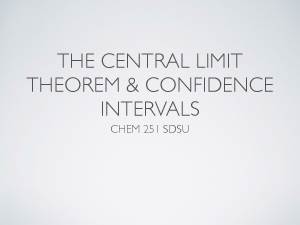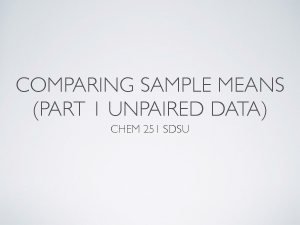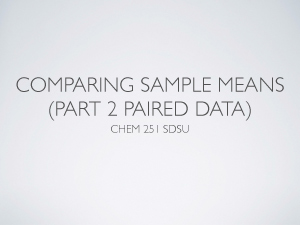Distributions & Statistical Analysis
Chris HarrisonAbstract This section explores the simple statistical tools employed by chemists to interpret their measured results. A principle aspect is the comparison of measured results and the determination of whether or not the values are equivalent.
LevelBasic
This section is supported by chapter 4B-F in the e-book Analytical Chemistry 2.0. You can download chapter 4 here.
8 - Propagation of Uncertainty
How the uncertainties in multiple measurements propagate through a series of calculations.
Click here to download the powerpoint as pdf.

9 - Outlier-Data-Points
How outlier data points should be addressed.
Click here to download the powerpoint as pdf.

10 - Normal Distributions
How individual, and finite numbers of measurements, relate to an infinite number of measurements (normal distribution).
Click here to download the powerpoint as pdf.

11 - Significant Figures
How uncertainty determines the number of significant figures and how this is applied to calculations.
Click here to download the powerpoint as pdf.

12 - The Central Limit Theorem & Confidence Intervals
Defining confidence intervals based on a finite number of measurements.
the powerpoint as pdf.

13 - Significance Testing
Using confidence intervals to determine equivalence in values from two sets of data.
Click here to download the powerpoint as pdf.

14 - Comparing Sample Means - Unpaired Data
Using confidence intervals to compare measured means from two separate sets of results for the same sample population.
Click here to download the powerpoint as pdf.

15 - Comparing Sample Means - Paired Data
Using confidence intervals to compare measured means for a range of samples measured by two separate entities.
Click here to download the powerpoint as pdf.

